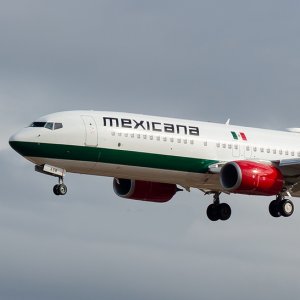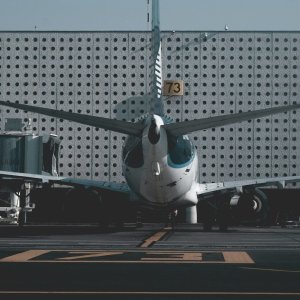
AIFA Offers Much More Than Expected
 By María José Goytia | Journalist and Industry Analyst -
Thu, 04/28/2022 - 14:06
By María José Goytia | Journalist and Industry Analyst -
Thu, 04/28/2022 - 14:06
The airport system in the Valley of Mexico has operated above capacity for almost 30 years. The Felipe Ángeles International Airport (AIFA) was built to counteract this saturation and complement the metropolitan airport system, composed of Mexico City International Airport (AICM) and Toluca International Airport.
AICM has been saturated since 1994, as estimated by the Ministry of Infrastructure, Communications and Transportation (SICT) in accordance with the National Airport Law. Considering that AICM is the most important airport terminal in the country, this saturation poses a pressing problem for all airlines and passengers that use it. Under these circumstances, "AIFA seeks to make operations safer for passengers and avoid airline expenses due to delays generated by airport saturation in Mexico City," said Colonel Alain Reynaldo Solana Arévalo, Deputy General Operational Director, AIFA.
The airport was one of President Andrés Manuel López Obrador campaign promises and began construction on Oct. 17, 2019, in the Santa Lucía military base, State of Mexico, under the responsibility of the Mexican Army Corps of Engineers. Its first construction phase was completed in 2.5 years and inaugurated on March 21, 2022.
AIFA has a 273,339 m2 terminal building, with an operating capacity of 19.5 million passengers per year. Its aeronautical infrastructure consists of two 4.5 km parallel runways of hydraulic concrete, suitable for landing any type of aircraft. In addition, AIFA has a cargo and customs terminal for merchandise transportation, with a capacity of up to 3 million tons per year.
Since its inauguration, AIFA has carried out 449 operations: 224 departures and 225 arrivals, mobilizing 46,052 passengers. At the moment, only four airlines operate at AIFA: Aeroméxico, Volaris, Viva Aerobus and the Venezuelan airline Conviasa. "We had a slow start; we are working to boost the airport and grow gradually," said Colonel Solana. AIFA also offers general aviation operations, hosting a total of 40 operations carrying 74 passengers.
"AIFA is a sui generis airport… It has a great infrastructure for general aviation and for domestic and international cargo. However, what distinguishes this airport is that it also has spaces for entertainment and business," said Colonel Solana. AIFA's surroundings are equipped with hotels, shopping malls and spaces for cultural activities that seek to take advantage of the airport's infrastructure to generate a larger economic spillover and incentivize businesses.
AIFA also has its own fuel farm, a series of storage tanks buried underground, with a capacity of 21 million liters of turbo fuel. The airport's infrastructure allows direct fueling through a subway pipeline, shortening refueling time and increasing operational safety. To increase security and competitiveness, AIFA's facilities have also been equipped with the latest technology available, decreasing user waiting times and improving comfort.
Passenger processing is done either at the counter or through a virtual check-in using a mobile app. Then baggage documentation is done through a drop-off, shortening the passenger’s journey to the final departure lounge by about 15 minutes. AIFA also maintains the safety measures to prevent COVID-19 infections through its touchless and paperless passenger processing system, which is also adapted for the use of electronic passports. “According to IATA, the technology implemented at AIFA for passenger processing makes the airport 74 percent faster, 61 percent more intuitive, 50 percent more secure and [the experience] 72 percent more satisfactory,” said Colonel Solana.
AIFA also offers airlines competitive costs in comparison to other airports in the area, said Colonel Solana. According to the Ministry of Finance (SHCP), AIFA’s fares are 13 percent lower on average than those of AICM, some are up to 25 percent less expensive. This represents a great incentive for airlines to operate in AIFA.
One of the largest criticisms AIFA received at the time of its inauguration was the lack of road connectivity that made it harder for passengers to travel to the airport. However, land connective has been expanded to facilitate access to the new airport, said Colonel Solana. These infrastructure works include improvements to the Mexico-Pachuca Highway and the State of Mexico Exterior Beltway. Moreover, several private companies now offer transportation to AIFA from different key points in Mexico City at a maximum cost of MX$150 (US$7.30). Departure points include Perisur Mall, Santa Fe Mall, Mundo E Mall, the National Auditorium, the World Trade Center building, intermodal stations Indios Verdes and Ciudad Azteca and the AICM. Also, the State of Mexico offers an articulated transportation system to AIFA for MX$18 (US$0.88).
"We are strongly committed to the satisfaction of our passengers and airlines that work with us; we are constantly seeking to improve," said Colonel Solana. AIFA has barely been operating for one month and its operators are continuously working to consolidate the airport's position. "We are analyzing our areas of opportunity to keep improving and make AIFA an airport of quality, warmth and efficiency that will drive Mexico's growth.
















